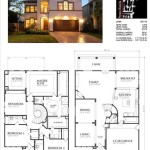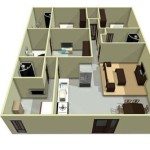Essential Aspects of House Extensions Plans
When embarking on a house extension project, meticulous planning is imperative. A well-crafted plan serves as the blueprint for a successful renovation that meets your needs, complements the existing structure, and adheres to building regulations.
1. Define Your Needs and Goals
Start by identifying your reasons for extending your home. Do you require additional living space, a dedicated home office, or an extended kitchen? Clearly define your functional requirements to guide the design process.
2. Explore Design Options
Research various extension designs to determine which suits your needs and architectural style. Consider single-story or double-story extensions, side or rear additions, and the impact on natural light. Seek professional advice from an architect or designer to refine your ideas and create a feasible plan.
3. Obtain Building Permits and Approvals
Before commencing construction, obtain necessary building permits and approvals. Submit your plans to the local planning authority for review and consent. Ensure your extension complies with zoning regulations, building codes, and any relevant planning restrictions.
4. Choose Suitable Materials
The choice of materials significantly influences the aesthetic appeal and durability of your extension. Consider the materials used in your existing home for a cohesive design. Explore options such as brick, stone, timber, or contemporary materials like glass and steel.
5. Plan for Windows and Doors
Natural light is essential in any extension. Plan for ample windows to maximize natural illumination and create a sense of space. Consider the orientation and size of windows to balance sunlight and privacy. Additionally, decide on doors, including their type, location, and access points.
6. Consider Roofing and Insulation
The roof of your extension should complement the existing structure while ensuring weatherproofing and insulation. Choose roofing materials that match the aesthetic of your home and provide adequate protection from the elements.
7. Plan for Utilities and Infrastructure
Electrical wiring, plumbing, and heating systems need to be extended to accommodate the new space. Plan for the installation of sockets, switches, lighting, and water supply. Ensure proper ventilation and consider underfloor heating or other energy-efficient systems for optimal comfort.
8. Seek Expert Advice
Throughout the planning and construction process, seek advice from qualified professionals. An architect or designer can guide you through the design and planning stages, while a builder ensures that the extension meets building regulations and is constructed to a high standard.

3 Bed House Floor Plan Rear Extension Google Search Plans Kitchen Flooring

House Extension Drawings Types Of Designs And Plans You Need

House Extension Plans Graham Lea Architecture

House Extensions For The Brisbane Entertainer Seq Building Design

House Design Plans Idea 7x11 5 With 3 Bedrooms S Extension Extensions

House Extension Advice Sigma Homes Design Builders Cork

Extension Plans And Drawings Planning2exten Co Dorking Surrey

Two Y Double Extension Ideas For A Semi Se London Houzz

House Extensions Planning Permission Fowler Architecture And

House Extension Plans Examples And Ideas








